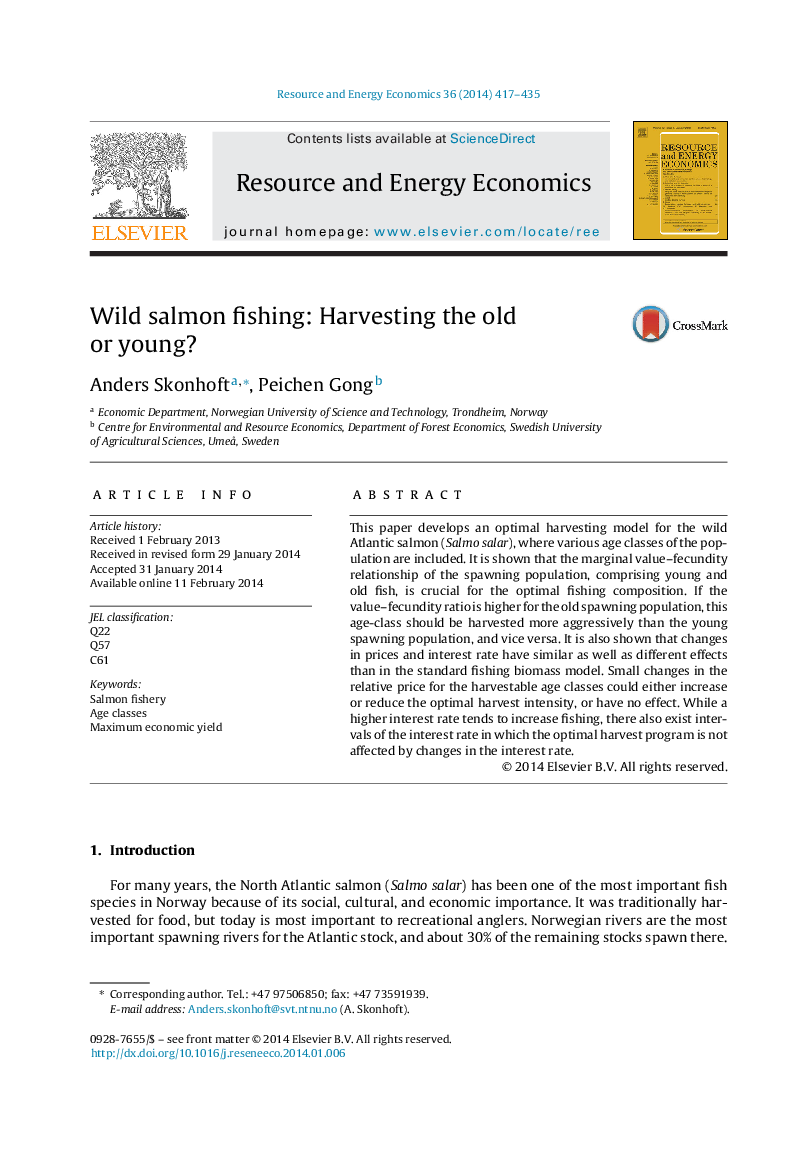| Article ID | Journal | Published Year | Pages | File Type |
|---|---|---|---|---|
| 10483317 | Resource and Energy Economics | 2014 | 19 Pages |
Abstract
This paper develops an optimal harvesting model for the wild Atlantic salmon (Salmo salar), where various age classes of the population are included. It is shown that the marginal value-fecundity relationship of the spawning population, comprising young and old fish, is crucial for the optimal fishing composition. If the value-fecundity ratio is higher for the old spawning population, this age-class should be harvested more aggressively than the young spawning population, and vice versa. It is also shown that changes in prices and interest rate have similar as well as different effects than in the standard fishing biomass model. Small changes in the relative price for the harvestable age classes could either increase or reduce the optimal harvest intensity, or have no effect. While a higher interest rate tends to increase fishing, there also exist intervals of the interest rate in which the optimal harvest program is not affected by changes in the interest rate.
Related Topics
Physical Sciences and Engineering
Energy
Energy (General)
Authors
Anders Skonhoft, Peichen Gong,
